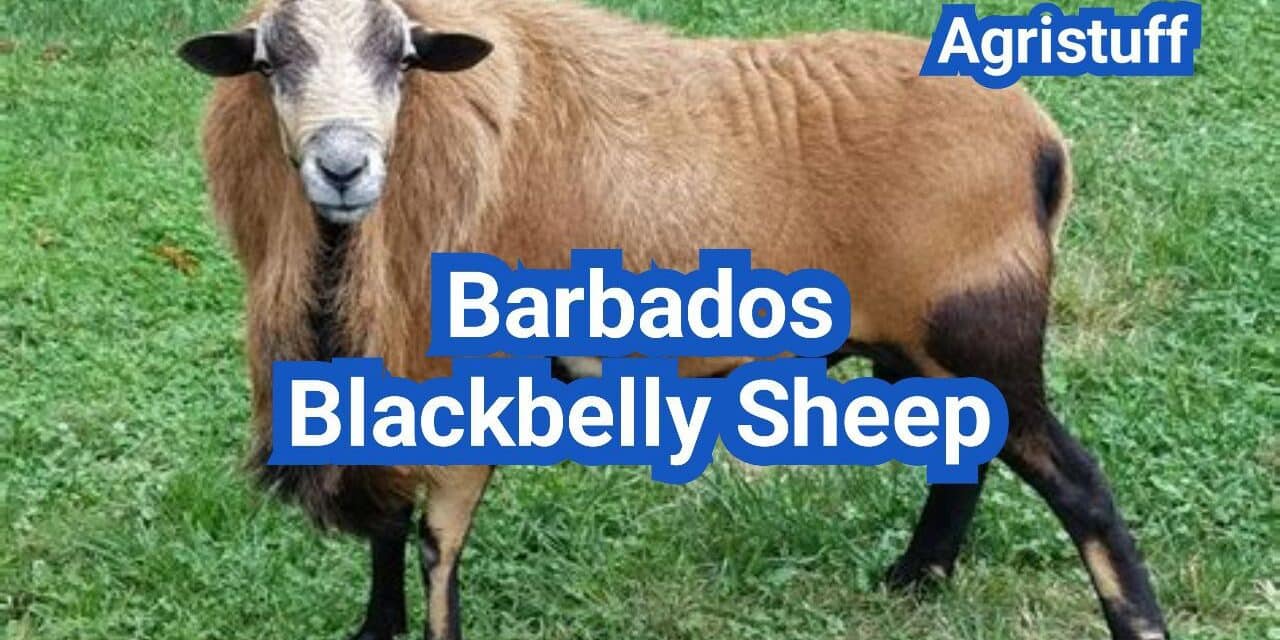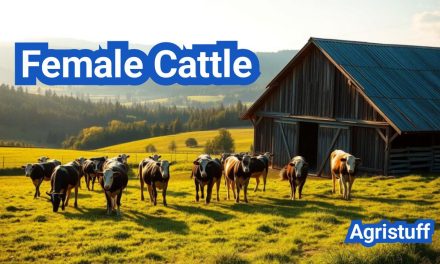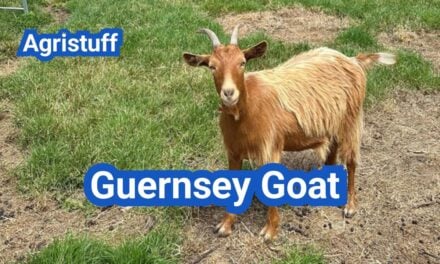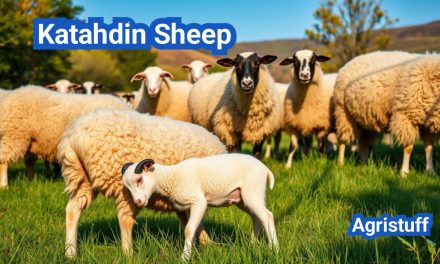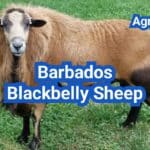The Barbados Blackbelly Sheep is an indigenous breed with a rich history and unique characteristics. Originating from sheep brought to the islands from West Africa during the slave era, this breed has evolved over time.
Known for its hardiness and resistance to diseases, the breed has become popular for its unique appearance and breeding capabilities. Understanding the history, origin, and characteristics of the Barbados Blackbelly Sheep is essential for farmers and animal enthusiasts alike.
Key Takeaways
- Originated from West African sheep
- Known for hardiness and disease resistance
- Unique appearance and breeding capabilities
- Popular among farmers and animal enthusiasts
- Rich history and characteristics
The Origins of Barbados Blackbelly Sheep
With roots tracing back to the Caribbean island of Barbados, the Barbados Blackbelly Sheep is a breed with a fascinating origin story. The breed’s history is closely tied to the island’s cultural and agricultural development.
History in the Caribbean Island of Barbados
The Barbados Blackbelly Sheep evolved on the island of Barbados in the Caribbean. The introduction of tropically adapted hair sheep from West Africa during the slave trade period, along with a poorly adapted but prolific wooled sheep of unknown origin, contributed significantly to the breed’s development.
The unique combination of these genetic influences resulted in a hardy, adaptable sheep breed well-suited to the tropical climate of Barbados.
Development of the Breed
The development of the Barbados Blackbelly Sheep was shaped by the island’s agricultural needs and the environmental conditions. Key characteristics of the breed include:
- Hardiness and resistance to tropical diseases
- Adaptability to the island’s climate
- Prolific breeding capability
These traits made the Barbados Blackbelly Sheep an invaluable asset to the local farming community.
Introduction to the United States
The Barbados Blackbelly Sheep was introduced to the United States, where it gained popularity for its hardiness and productivity. The breed’s introduction to the U.S. marked the beginning of its global spread.
The breed’s adaptability to different climates and its resistance to parasites made it an attractive option for farmers in various regions.
Understanding Barbados Blackbelly Sheep

Understanding the Barbados Blackbelly Sheep requires examining its characteristics, conservation status, and agricultural role. This breed is known for its hardiness, parasite resistance, and reproductive efficiency, making it a valuable asset in various farming contexts.
Defining Characteristics
The Barbados Blackbelly Sheep is characterized by its hardiness and adaptability to different environments. Some key characteristics include:
- Resistance to parasites, reducing the need for chemical treatments
- High reproductive efficiency, with ewes often having multiple births
- Adaptability to hot climates and resistance to certain diseases
As noted by agricultural experts, “The Barbados Blackbelly Sheep’s ability to thrive in challenging conditions makes it an ideal choice for farmers looking for a low-maintenance breed.”
Conservation Status
The conservation status of the Barbados Blackbelly Sheep varies by region. Efforts are being made to conserve and promote the breed due to its unique genetic traits. Conservation initiatives often focus on:
- Maintaining genetic diversity within the breed
- Promoting the breed’s advantages to farmers and agricultural communities
- Supporting breeders who are working to preserve the breed’s integrity
Role in Sustainable Agriculture
The Barbados Blackbelly Sheep plays a significant role in sustainable agriculture due to its parasite resistance and reproductive efficiency. By incorporating this breed into farming systems, farmers can:
- Reduce reliance on chemical parasite control methods
- Improve lamb production through efficient breeding practices
- Enhance overall farm sustainability by utilizing a hardy and adaptable breed
As sustainable agriculture continues to grow in importance, breeds like the Barbados Blackbelly Sheep are likely to play an increasingly vital role in environmentally conscious farming practices.
Physical Characteristics of Barbados Blackbelly Sheep
The Barbados Blackbelly sheep is known for its distinctive physical attributes, making it a popular choice among sheep breeders. This breed is characterized by several notable features that contribute to its hardiness and productivity.
Size and Weight
Barbados Blackbelly sheep are known for their moderate size. Mature ewes typically weigh around 100 pounds, while rams are slightly larger, weighing between 105-125 pounds. This size makes them manageable for farmers of various scales.
| Category | Weight Range (pounds) |
|---|---|
| Mature Ewes | Around 100 |
| Mature Rams | 105-125 |
Distinctive Coloration and Appearance
One of the breed’s most distinctive features is its coloration. Barbados Blackbelly sheep have a reddish-brown or tan body with black on the belly, legs, and facial bars, creating a striking appearance. This coloration is a key identifier of the breed.
Hair vs. Wool Characteristics
Unlike many sheep breeds that have wool, Barbados Blackbelly sheep are classified as “hair sheep.” They have a coat of hair rather than wool, which makes them more resistant to certain parasites and reduces the need for frequent shearing.
Hair Characteristics: Their hair coat is typically short and smooth, requiring less maintenance compared to wool breeds.
Horn Development in Rams and Ewes
Both rams and ewes can develop horns, although the size and shape can vary. Rams typically have larger, more pronounced horns, while ewes may have smaller or no horns. The presence of horns is a natural defense mechanism and can be an important consideration in managing the flock.
In summary, the Barbados Blackbelly sheep’s physical characteristics, including its size, coloration, hair coat, and horn development, make it a unique and valuable breed for farmers and breeders.
Temperament and Behavior
Understanding the temperament and behavior of Barbados Blackbelly sheep is essential for effective flock management. These sheep are known to be alert and active, with a strong instinct to flee from predators, which makes them quite hardy and adaptable to various farming conditions.
Natural Instincts and Flock Behavior
Barbados Blackbelly sheep exhibit strong natural instincts that guide their behavior. They are prey animals and have a heightened sense of awareness, always on the lookout for potential threats. This instinctual behavior is beneficial for farmers, as it allows the sheep to avoid predators effectively.
The flock behavior of Barbados Blackbelly sheep is another important aspect of their temperament. They are social animals that thrive in the company of other sheep. Establishing a hierarchical structure within the flock is common, with dominant individuals leading the way.
Handling and Management Techniques
Effective handling and management techniques are crucial for maintaining a healthy and productive flock of Barbados Blackbelly sheep. Due to their alert nature, it’s essential to approach them calmly and gently to avoid stressing the animals.
Regular handling from an early age can make Barbados Blackbelly sheep more docile and easier to manage. Training them to move through gates or chutes can simplify tasks such as vaccinations, hoof trimming, and other health checks.
Key handling tips include:
- Move calmly and deliberately around the sheep to avoid startling them.
- Use gentle, consistent pressure to guide them.
- Avoid loud noises that can frighten the animals.
Compatibility with Other Livestock
Barbados Blackbelly sheep are generally compatible with other livestock, making them a versatile choice for mixed farming operations. They can graze alongside cattle, goats, and other animals without significant conflict.
However, it’s crucial to monitor the dynamics between different species to ensure harmony within the farm. Introducing Barbados Blackbelly sheep to other livestock should be done gradually and under supervision to prevent any initial conflicts.
By understanding and leveraging the natural behavior and temperament of Barbados Blackbelly sheep, farmers can create a more efficient and harmonious farming environment.
Why Choose Barbados Blackbelly Sheep for Your Farm
For farmers looking for a hardy and adaptable breed, the Barbados Blackbelly Sheep stands out as an excellent choice. Their unique characteristics and benefits make them an attractive option for a wide range of farming operations.
Advantages for Beginners
The Barbados Blackbelly Sheep is particularly well-suited for beginners due to its hardiness and ease of management. This breed is known for its ability to thrive with minimal supervision, making it an ideal choice for those new to sheep farming.
Beginners will appreciate the breed’s natural resistance to parasites, which reduces the need for frequent veterinary interventions. Additionally, their calm temperament makes handling and management easier, even for those with limited experience.
Low-Maintenance Benefits
One of the key advantages of the Barbados Blackbelly Sheep is its low-maintenance requirements. They are well-adapted to hot climates and can tolerate a variety of environmental conditions, reducing the need for elaborate housing or climate-controlled facilities.
Their hair coat, as opposed to wool, means they require less grooming and are less prone to issues like matting or felting. This characteristic also eliminates the need for shearing, further reducing labor costs and management time.
Economic Considerations
From an economic standpoint, Barbados Blackbelly Sheep offer several benefits. They are relatively inexpensive to purchase compared to some other breeds, and their low-maintenance requirements translate into cost savings on feed, veterinary care, and labor.
The breed’s fertility and lambing rates also contribute to its economic viability. Ewes are known for their strong maternal instincts and ability to produce multiple lambs, increasing the potential for higher returns on investment.
| Economic Factor | Barbados Blackbelly Sheep | Other Breeds |
|---|---|---|
| Initial Purchase Cost | Low | Variable |
| Feed Costs | Low to Moderate | Moderate to High |
| Veterinary Costs | Low | Variable |
| Lambing Rate | High | Variable |
Suitability for Different Farm Sizes
Barbados Blackbelly Sheep are versatile and can thrive on farms of various sizes. Their adaptability makes them suitable for small-scale operations as well as larger commercial farms.
“The Barbados Blackbelly Sheep is an excellent choice for farmers of all experience levels due to its hardiness, low-maintenance requirements, and economic viability.”
For small farms, they offer a manageable and profitable enterprise, while larger farms can benefit from their scalability and the potential for significant returns through meat or breeding stock sales.
Adaptability to Different Climates
The Barbados Blackbelly Sheep breed is renowned for its exceptional adaptability to various climates. This adaptability makes them an attractive choice for farmers across different regions.
Performance in Hot Environments
Barbados Blackbelly Sheep are well-suited to hot and humid climates, thanks to their origins in the Caribbean. Their tropical hair sheep adaptability allows them to thrive in environments where other breeds might struggle.
Their ability to withstand high temperatures is attributed to their short, smooth coats that reflect sunlight and allow for good airflow. This characteristic reduces the risk of heat stress, making them ideal for farming in tropical and subtropical regions.
Cold Weather Considerations
While they excel in hot climates, Barbados Blackbelly Sheep can also adapt to cooler environments. However, their tolerance to cold weather is limited compared to breeds specifically raised in colder climates.
Farmers in cooler regions should provide adequate shelter and protection from harsh winds to ensure the sheep’s comfort and health. Proper nutrition and care can also help them cope with colder conditions.
Tropical Hair Sheep Adaptability
The adaptability of Barbados Blackbelly Sheep is largely due to their classification as tropical hair sheep. This breed characteristic enables them to:
- Withstand high temperatures and humidity
- Resist parasites more effectively than wool breeds
- Require less maintenance in terms of grooming
| Climate Characteristic | Barbados Blackbelly Sheep Adaptability |
|---|---|
| Hot and Humid | Highly adaptable, thrives in these conditions |
| Cold | Moderately adaptable, requires additional care |
| Tropical Regions | Excellent performance, well-suited |
In conclusion, the Barbados Blackbelly Sheep’s adaptability to different climates is a significant advantage. Their performance in hot environments is particularly noteworthy, while their ability to adapt to cooler climates with proper care makes them a versatile choice for farmers worldwide.
Health Benefits and Parasite Resistance

Barbados Blackbelly Sheep have gained popularity due to their impressive health benefits, particularly their resistance to internal parasites. This characteristic makes them an attractive option for farmers looking to reduce their reliance on chemical parasite control methods.
Natural Immunity Advantages
The natural immunity of Barbados Blackbelly Sheep is one of their most significant advantages. This breed has developed a robust immune system over time, allowing them to resist many common parasites and diseases that can affect sheep. The natural immunity advantages include:
- Reduced need for chemical treatments
- Lower risk of parasite resistance developing
- Improved overall health and productivity
This natural resistance is particularly beneficial in tropical and subtropical regions where parasite pressure is high. By choosing Barbados Blackbelly Sheep, farmers can potentially reduce their veterinary costs and improve the welfare of their flock.
Common Health Concerns
While Barbados Blackbelly Sheep are generally hardy and resistant to many health issues, they are not entirely immune to all problems. Some common health concerns include:
- Internal parasites (although they have a higher resistance than many other breeds)
- Foot rot and other hoof infections
- Respiratory infections
Regular monitoring and appropriate management practices can help mitigate these risks. It’s essential for farmers to be aware of these potential issues and implement preventative care protocols to maintain the health of their flock.
Preventative Care Protocols
Implementing effective preventative care protocols is crucial for maintaining the health and productivity of Barbados Blackbelly Sheep. Some key strategies include:
- Regular parasite monitoring and control measures
- Vaccination programs tailored to the specific region and disease risks
- Proper nutrition and feeding practices
- Regular hoof care and monitoring for signs of foot rot or other hoof issues
By following these protocols, farmers can maximize the health benefits of raising Barbados Blackbelly Sheep and ensure the long-term sustainability of their flock.
How to Start Breeding Barbados Blackbelly Sheep

Breeding Barbados Blackbelly Sheep can be a rewarding venture, but it demands a thorough understanding of the breed’s characteristics and needs. To get started, it’s crucial to establish a well-planned breeding program that takes into account the specific traits and advantages of this breed.
Setting Up Your Breeding Program
Setting up a breeding program for Barbados Blackbelly Sheep involves several key steps. First, you need to define your breeding objectives, whether it’s to improve certain traits, increase flock size, or develop a specific line of sheep. You’ll also need to select high-quality breeding stock, considering factors such as genetics, health, and temperament.
It’s also important to establish a record-keeping system to track the performance and lineage of your sheep. This will help you make informed decisions about which animals to breed and when.
Breeding Season Information
Barbados Blackbelly Sheep are known for their ability to breed year-round, which can be an advantage for farmers looking to produce lambs throughout the year. However, it’s still important to plan your breeding season carefully to ensure optimal lambing rates and to manage the flock effectively.
The breeding season can be influenced by factors such as nutrition, health, and climate. Ensuring that your ewes are in good condition before breeding can significantly impact the success of your breeding program.
Ewe Productivity and Selection
Ewe productivity is a critical factor in the success of a Barbados Blackbelly Sheep breeding program. Selecting ewes with high productivity, such as those that can produce multiple lambs per year, is essential. Barbados Blackbelly ewes are known for their prolificacy, with an average lambing rate of 1.50-2.30 lambs per ewe lambing.
When selecting ewes, consider factors such as their reproductive history, overall health, and genetic background. Ewes that have a history of producing multiple lambs and are structurally sound are ideal for breeding.
Lambing Rate and Multiple Births
The lambing rate is a key performance indicator for any sheep breeding operation. Barbados Blackbelly Sheep are renowned for their high lambing rates, making them an attractive choice for farmers looking to maximize their lamb production.
Multiple births are common in Barbados Blackbelly Sheep, and managing these births effectively is crucial. Ensuring that ewes receive proper nutrition and care during pregnancy can help reduce complications during lambing.
By understanding and managing these aspects of breeding Barbados Blackbelly Sheep, farmers can develop a successful and productive breeding program that meets their needs and goals.
Step-by-Step Guide to Raising Barbados Blackbelly Sheep

Effective management of Barbados Blackbelly Sheep involves a comprehensive approach to their care. This guide will walk you through the essential steps to raise these sheep successfully.
Housing Requirements and Setup
Providing adequate housing is crucial for the health and well-being of Barbados Blackbelly Sheep. The shelter should protect them from extreme weather conditions and predators.
Key Considerations for Housing:
- Ensure adequate ventilation to prevent respiratory issues.
- Provide enough space for the sheep to move comfortably.
- Use fencing that is at least 5 feet high to prevent escape and predator entry.
Feeding and Nutrition Guidelines
Barbados Blackbelly Sheep are known for their hardiness and ability to thrive on minimal supplementation. However, a balanced diet is essential for optimal health and productivity.
| Nutrient | Requirement | Source |
|---|---|---|
| Protein | 10-12% | Pasture, hay, or grain |
| Energy | 2.5-3.0 Mcal/kg | Pasture, hay, or grain |
| Minerals | Varies by mineral | Mineral supplements |
Daily Care Routine
A daily care routine is vital for maintaining the health of Barbados Blackbelly Sheep. This includes monitoring their health, providing fresh water, and ensuring they have access to adequate nutrition.
Daily Checks Should Include:
- Health monitoring for signs of illness or injury.
- Ensuring access to clean, fresh water.
- Checking for any signs of parasite infestation.
Record Keeping Systems
Maintaining accurate records is crucial for the effective management of Barbados Blackbelly Sheep. This includes records of breeding, health issues, and nutritional programs.
Essential Records to Keep:
- Breeding records, including dates and outcomes.
- Health records, including vaccinations and treatments.
- Nutritional records, including feeding programs and supplements.
Barbados Blackbelly Sheep in the United States

The presence of Barbados Blackbelly sheep in the United States is a testament to the breed’s versatility and resilience. As their popularity grows among farmers and breeders, understanding their current status in the U.S. becomes increasingly important.
Current Population and Distribution
The Barbados Blackbelly Sheep Association International plays a crucial role in tracking and promoting the breed across the United States. While exact numbers can fluctuate, the breed has seen a steady increase in popularity over the years. They are distributed across various states, with a notable presence in regions with suitable climates for their hardy nature.
Breed Associations and Resources
For those interested in Barbados Blackbelly sheep, the Barbados Blackbelly Sheep Association International is a key resource. It represents breeders of both Barbados Blackbelly and American Blackbelly sheep in the U.S., providing a unified voice for the breed and supporting breeders through various initiatives and services.
Finding Local Breeders
Prospective buyers can find local breeders through the association’s directory or by attending agricultural events and sheep breed exhibitions. Networking with existing breeders is a valuable way to gain insights into the breed and find quality animals for purchase.
By combining these elements, we create a comprehensive overview of Barbados Blackbelly sheep in the United States, covering their population, distribution, and the resources available to those interested in the breed.
Barbados Blackbelly vs. American Blackbelly: Understanding the Differences

Understanding the differences between Barbados Blackbelly and American Blackbelly sheep is crucial for making informed breeding decisions. While both breeds share a common ancestry, they have distinct characteristics that cater to different needs and preferences.
Genetic Distinctions
The American Blackbelly was developed from the Barbados Blackbelly, with significant genetic contributions aimed at enhancing certain traits. One of the primary genetic distinctions lies in their size and horn development.
The Barbados Blackbelly is known for its hardiness and adaptability, traits that have been preserved through careful breeding. In contrast, the American Blackbelly has been bred for larger size and more pronounced horns, making it a favorite among breeders looking for these characteristics.
Physical Differences
Physically, the Barbados Blackbelly is generally smaller and more compact, with a typical weight range that is lower than that of the American Blackbelly. The American Blackbelly is not only larger but also often exhibits more pronounced horn development in both rams and ewes.
- The Barbados Blackbelly has a more uniform coloration, typically with a black belly and face.
- The American Blackbelly can display a variety of colors and patterns, in addition to the black belly characteristic.
Performance Comparisons
In terms of performance, both breeds are known for their hardiness and resistance to parasites. However, the American Blackbelly’s larger size can be an advantage in certain production systems.
The Barbados Blackbelly excels in its reproductive efficiency and adaptability to various climates, making it a preferred choice for many farmers.
Choosing Between the Breeds
When deciding between Barbados Blackbelly and American Blackbelly sheep, several factors come into play. These include your specific breeding goals, the climate and environment of your farm, and your market demands.
Consider the Barbados Blackbelly if you prioritize hardiness, reproductive efficiency, and a smaller, more manageable size.
Opt for the American Blackbelly if you prefer a larger animal with more pronounced horns, potentially for meat production or as a show animal.
Commercial Uses of Barbados Blackbelly Sheep

The Barbados Blackbelly Sheep is a versatile breed with various commercial applications. Their hardiness, productivity, and unique characteristics make them an attractive choice for farmers and ranchers looking to diversify their operations.
Meat Production and Quality
Barbados Blackbelly Sheep are known for their lean meat, which is mild in flavor and tender in texture. This makes them particularly suitable for specialty meat markets where consumers are looking for high-quality, grass-fed lamb products.
Key characteristics of Barbados Blackbelly meat include:
- Leaner meat compared to other breeds
- Mild flavor profile
- Tender texture
- High demand in specialty markets
Grass-Fed Lamb Production Techniques
Grass-fed lamb production is a significant commercial application for Barbados Blackbelly Sheep. The breed thrives on pasture, making it ideal for rotational grazing systems that promote soil health and biodiversity.
Effective grass-fed lamb production techniques include:
- Rotational grazing to optimize pasture use
- Monitoring lamb growth rates and adjusting grazing plans accordingly
- Ensuring access to clean water and mineral supplements
- Implementing parasite control measures to maintain flock health
Marketing Your Barbados Blackbelly Products
Successful marketing of Barbados Blackbelly products involves highlighting their unique qualities and the sustainable production methods used. Farmers can leverage niche markets that value grass-fed, humanely raised lamb.
| Marketing Channel | Description | Potential Benefits |
|---|---|---|
| Farmers’ Markets | Direct sales to consumers | Builds customer relationships, allows for product sampling |
| Specialty Butcher Shops | Wholesale to high-end retailers | Access to niche markets, premium pricing |
| Online Platforms | E-commerce sales directly to consumers or restaurants | Wide reach, flexible marketing strategies |
Other Commercial Applications
Beyond meat production, Barbados Blackbelly Sheep can be used for land management purposes, such as vegetation control and conservation grazing. Their hardiness makes them suitable for challenging environments where other breeds might struggle.
Additional uses include:
- Land management through grazing
- Conservation efforts
- Breeding stock sales to other farmers
Advanced Breeding: Crossbreeding with Barbados Blackbelly
Advanced breeding techniques, such as crossbreeding with Barbados Blackbelly sheep, offer farmers a way to boost the productivity and resilience of their flocks. Crossbreeding programs utilizing Barbados Blackbelly sheep are being adopted worldwide to leverage their superior reproductive capabilities and disease resistance.
Common Crossbreeding Programs
Several crossbreeding programs have been developed to capitalize on the strengths of Barbados Blackbelly sheep. Some of the most common programs involve crossing Barbados Blackbelly ewes with rams from other breeds to improve the hardiness and fertility of the offspring.
- Crossing with wool breeds to enhance wool production while maintaining hardiness
- Crossing with meat breeds to improve growth rates and carcass quality
- Crossing with other hair sheep breeds to enhance parasite resistance and adaptability
Expected Outcomes and Benefits
The expected outcomes of crossbreeding with Barbados Blackbelly sheep include improved reproductive performance, enhanced parasite resistance, and increased overall hardiness. These benefits can lead to increased productivity and profitability for farmers.
Key benefits:
- Improved reproductive efficiency
- Enhanced disease resistance
- Better adaptability to challenging environments
Maintaining Breed Integrity
While crossbreeding can offer numerous benefits, maintaining the integrity of the Barbados Blackbelly breed is crucial. This involves careful selection of breeding stock and adherence to breed standards to preserve the unique characteristics of the breed.
Record Keeping for Crossbreeding
Effective record keeping is essential for successful crossbreeding programs. This includes maintaining detailed records of breeding stock, lambing outcomes, and growth rates to inform future breeding decisions.
How to Purchase Quality Barbados Blackbelly Sheep
The process of buying Barbados Blackbelly sheep involves several critical steps, including identifying reliable breeders and assessing the health of the animals. To ensure a successful purchase, it’s essential to be informed about the key factors that influence the quality and price of these sheep.
Locating Reputable Breeders
Finding a reputable breeder is the first step in purchasing quality Barbados Blackbelly sheep. The Barbados Blackbelly Sheep Association is a valuable resource for locating breeders who are registered and adhere to breed standards. When contacting breeders, ask about their breeding program, including selection criteria and breeding practices.
It’s also beneficial to visit the breeder in person to see the conditions in which the sheep are kept and to assess the health and quality of the animals directly. A reputable breeder will be transparent about the health history of their sheep and provide necessary documentation.
What to Look for When Buying
When buying Barbados Blackbelly sheep, several factors should be considered. First, evaluate the overall health and condition of the sheep. Look for signs of illness or stress, such as unusual discharge, coughing, or lethargy. The sheep should have a robust appearance with a good body condition score.
Additionally, consider the age, sex, and breeding history of the sheep. For breeding purposes, the genetic diversity and lineage of the animals are crucial. Ensure that the sheep have been properly vaccinated and are up-to-date on parasite control measures.
Health Checks Before Purchase
Conducting or arranging for a health check before finalizing the purchase is highly recommended. A veterinarian can perform a thorough examination to identify any potential health issues. Key areas to focus on include the sheep’s dental health, hoof condition, and internal parasite status.
It’s also wise to review the sheep’s vaccination history and any previous health treatments. This information can help you make an informed decision and avoid potential future health problems.
Typical Costs and Considerations
The cost of Barbados Blackbelly sheep can vary widely based on factors such as age, quality, breeding potential, and location. On average, prices can range from a few hundred to several thousand dollars per sheep. It’s essential to consider not just the purchase price but also the ongoing costs, including feed, veterinary care, and fencing.
When budgeting for your sheep purchase, also consider the costs associated with integrating new animals into your flock, such as quarantine facilities and potential veterinary expenses during the initial health check.
Troubleshooting Common Challenges with Barbados Blackbelly Sheep
While Barbados Blackbelly Sheep are known for their resilience, they are not immune to health and breeding issues. Farmers who raise these sheep may encounter a variety of challenges that require careful management and troubleshooting.
Health Issues and Solutions
Barbados Blackbelly Sheep are generally hardy, but like all livestock, they can be susceptible to certain health issues. Internal parasites are a common problem, particularly in grazing animals. Regular monitoring and strategic deworming are crucial for maintaining the health of the flock.
Another health concern is foot rot, a bacterial infection that thrives in wet conditions. Keeping pastures dry and ensuring proper hoof care can help prevent this issue. Vaccinations and a well-planned nutrition program also play a significant role in maintaining overall flock health.
Breeding Problems
Breeding issues can arise if not managed properly. One common problem is infertility in rams, which can be caused by nutritional deficiencies or health issues. Ensuring that rams receive proper nutrition and regular veterinary check-ups can help mitigate this issue.
Reproductive issues in ewes, such as lambing difficulties, can also occur. Proper breeding selection and management practices, including monitoring ewe health and nutritional status, are essential for minimizing breeding problems.
Management Challenges
Managing a flock of Barbados Blackbelly Sheep presents several challenges, including predator control and fencing maintenance. Implementing effective predator control measures, such as guard animals or fencing, can help protect the flock.
Additionally, maintaining proper pasture management practices, such as rotational grazing, can help ensure the long-term sustainability of the grazing land and the health of the sheep.
Marketing Difficulties
Farmers may also face challenges when marketing their Barbados Blackbelly Sheep or their products. Developing a robust marketing strategy, including online presence and networking with potential buyers, can help overcome these difficulties.
Highlighting the unique qualities of Barbados Blackbelly Sheep, such as their hardiness and the quality of their meat, can also attract customers looking for sustainable and ethically produced products.
Is the Barbados Blackbelly Right for You?
The Barbados Blackbelly Sheep breed offers numerous advantages for farmers, including hardiness, parasite resistance, and low maintenance costs. Its unique characteristics make it an attractive choice for those looking to diversify their livestock.
When considering the suitability of the Barbados Blackbelly Sheep for your farm, it’s essential to weigh its benefits against your specific needs and circumstances. Factors such as climate, available resources, and market demand should be taken into account.
By understanding the breed’s characteristics, advantages, and potential challenges, you can make an informed decision about whether the Barbados Blackbelly Sheep is the right fit for your operation. Its adaptability and resilience make it a viable option for many farmers, particularly those in hot and humid climates.
Ultimately, the Barbados Blackbelly Sheep can be a valuable addition to a well-managed farm, providing a sustainable and profitable source of income. Careful consideration of the breed’s suitability will help ensure a successful and rewarding experience.
FAQ
What is the origin of the Barbados Blackbelly Sheep?
The Barbados Blackbelly Sheep originated in the Caribbean island of Barbados, where they were developed from African sheep brought to the island by European colonizers.
What are the defining characteristics of Barbados Blackbelly Sheep?
Barbados Blackbelly Sheep are known for their distinctive black belly, hair coat, and heat tolerance. They are also recognized for their parasite resistance and hardiness.
Are Barbados Blackbelly Sheep suitable for beginners?
Yes, Barbados Blackbelly Sheep are considered a good choice for beginners due to their low-maintenance requirements, hardiness, and ease of handling.
How do Barbados Blackbelly Sheep perform in hot climates?
Barbados Blackbelly Sheep are well-suited to hot climates due to their heat tolerance and ability to thrive in tropical environments.
What is the average weight of a mature Barbados Blackbelly ewe?
The average weight of a mature Barbados Blackbelly ewe is around 80-100 pounds (36-45 kg).
Do Barbados Blackbelly Sheep have horns?
Some Barbados Blackbelly Sheep may have horns, but it is not a universal characteristic of the breed. Both horned and polled individuals can be found.
What is the lambing rate of Barbados Blackbelly Sheep?
Barbados Blackbelly Sheep are known for their high lambing rate, with ewes often producing multiple lambs per year.
Are Barbados Blackbelly Sheep good for meat production?
Yes, Barbados Blackbelly Sheep are used for meat production, and their lamb is considered a delicacy in some markets.
Can Barbados Blackbelly Sheep be crossbred with other breeds?
Yes, Barbados Blackbelly Sheep can be crossbred with other breeds to improve their characteristics or to create new breeds.
How do I locate reputable breeders of Barbados Blackbelly Sheep?
You can locate reputable breeders of Barbados Blackbelly Sheep by contacting breed associations, attending agricultural events, or searching online for breeders in your area.
What health checks should I perform before purchasing Barbados Blackbelly Sheep?
Before purchasing Barbados Blackbelly Sheep, you should perform health checks to ensure the animals are free from diseases and parasites.
What are the common health concerns associated with Barbados Blackbelly Sheep?
Barbados Blackbelly Sheep are generally hardy, but they can be susceptible to certain health issues, such as parasites and hoof problems.
How do I care for Barbados Blackbelly Sheep?
To care for Barbados Blackbelly Sheep, you should provide them with adequate housing, nutrition, and health care, as well as regular monitoring and maintenance.
Conclusion of: Barbados Blackbelly Sheep Breed
Introduction to Barbados Blackbelly Sheep
Barbados Blackbelly Sheep are a heritage hair-sheep breed valued in the United States for their easy-care management, strong parasite tolerance, and excellent reproductive efficiency. Because Barbados Blackbelly Sheep shed their coat naturally, they suit low-input, pasture-based systems and small homesteads, especially in warm or humid regions. Their tan-to-mahogany bodies with a black belly and facial markings make Barbados Blackbelly Sheep one of the most recognizable sheep breeds, and their steady performance on forage makes them a smart choice for farmers looking for resilience and flavor in grass-finished lamb. Livestock Conservancy breed overview
History and African-Caribbean Roots
The history of Barbados Blackbelly Sheep begins in the 1600s, when Barbados became a major Atlantic trade center. Hair sheep from West Africa arrived during that era, and Europeans also introduced wooled sheep. Over time, natural selection in tropical heat and humidity shaped Barbados Blackbelly Sheep into a stable landrace that blended African hardiness with improved fertility. Most historians agree that the breed’s ancestry is largely African, but the distinct Barbados Blackbelly Sheep type developed on Barbados through generations of adaptation. Oklahoma State University history profile
How the Breed Evolved on Barbados
Barbados Blackbelly Sheep evolved in a climate marked by coarse forage, seasonal drought, and constant parasite pressure. Sheep that survived were those that could thrive on low-quality pasture, resist internal worms, lamb unassisted, and rebreed quickly. This long “environmental filter” produced Barbados Blackbelly Sheep with a compact, efficient frame and exceptional adaptability. By the 1700s, wool sheep largely disappeared from the island, and Barbados Blackbelly Sheep became a primary meat source for local households. FAO hair sheep background
Global Spread and Arrival in the United States
From the Caribbean, Barbados Blackbelly Sheep spread to parts of North and South America, and later to other regions worldwide. In the U.S., small groups of pure Barbados Blackbelly Sheep were imported in the 1970s and became foundation stock for registered flocks today. Their ability to handle hot summers, pasture challenges, and heavy parasite loads made Barbados Blackbelly Sheep appealing to producers across the Southeast and Gulf Coast. Although still considered a threatened heritage breed in America, Barbados Blackbelly Sheep are gaining attention in low-input lamb systems. U.S. conservation status
Physical Appearance and Coat Type
Barbados Blackbelly Sheep are hair sheep, meaning they grow a short coat that sheds seasonally rather than producing a heavy wool fleece. Typical Barbados Blackbelly Sheep coloring ranges from light fawn to deep mahogany, paired with black underparts, black legs, and clear facial bars. Rams may develop a darker neck mane, and both sexes of Barbados Blackbelly Sheep are naturally polled (hornless), which makes handling simpler. Their coat type helps Barbados Blackbelly Sheep stay cool and lowers the risk of wool-related issues like fleece rot. BBSAI breed standard
Size, Frame, and Growth Pattern
Most Barbados Blackbelly Sheep are small to medium in size. Mature rams commonly weigh around 100–130 lb, while ewes often range near 85–100 lb, though weights vary with nutrition, geography, and management. Barbados Blackbelly Sheep tend to mature more slowly than some commercial terminal breeds, reaching full condition closer to two years. Their deep, efficient body and moderate muscling reflect the breed’s pasture-first heritage and low-input strengths. BBSAI size guidelines
Temperament and Mothering Style
Barbados Blackbelly Sheep are alert, social, and generally calm with consistent, low-stress handling. They often flock tightly, which helps Barbados Blackbelly Sheep respond well to pasture moves and offers natural predator awareness. Ewes show strong maternal instincts: Barbados Blackbelly Sheep typically lamb easily, bond quickly, and maintain good milk production for a hair breed. For U.S. shepherds, these traits translate into fewer lambing complications and higher lamb survival with minimal intervention. UF/IFAS notes on meat breeds and behavior
Heat Tolerance and Parasite Resistance
A major advantage of Barbados Blackbelly Sheep is their adaptation to heat, humidity, and parasite pressure. Developed in the tropics, Barbados Blackbelly Sheep show higher natural tolerance to gastrointestinal worms than many wool breeds. U.S. hair-sheep research highlights Barbados Blackbelly Sheep genetics as valuable for improving flock resilience. While no breed is fully worm-proof, Barbados Blackbelly Sheep often require fewer chemical treatments when supported by rotational grazing and fecal monitoring. Parasite-resistance research summary
Reproductive Power: Non-Seasonal and Prolific
Barbados Blackbelly Sheep are non-seasonal breeders, meaning ewes can cycle and conceive year-round. This rare trait lets U.S. farmers schedule lambing to match forage peaks and market windows. Barbados Blackbelly Sheep commonly produce twins, and triplets are not unusual under good nutrition. With planning, some producers using Barbados Blackbelly Sheep achieve three lambings in two years, a key reason they are admired for reproductive efficiency. Reproduction and prolificacy review (CARDI)
Meat Traits and Carcass Qualities
Barbados Blackbelly Sheep are primarily raised for meat. Their lamb is typically lean, mild-flavored, and well-suited to grass-finished or direct-market programs. Because Barbados Blackbelly Sheep deposit less intramuscular fat than some wool breeds, USDA carcass grades can be lower even when eating quality is excellent. Carcass weights are usually lighter, but Barbados Blackbelly Sheep provide dependable yield relative to size, especially in forage-based systems or maternal crossbreeding programs. OSU carcass and meat traits
Breeding Programs and Crossbreeding in the U.S.
In America, Barbados Blackbelly Sheep are used as both purebreds and maternal foundations in crossbreeding for hardiness and fertility. Their easy lambing, year-round breeding, and parasite tolerance pair well with larger terminal sires such as Dorper, Katahdin, or Suffolk, depending on goals. It’s important to distinguish true Barbados Blackbelly Sheep from American Blackbelly sheep, a Texas-developed hybrid that is often horned. Buying registered Barbados Blackbelly Sheep helps preserve genuine genetics and predictable performance. American vs. Barbados Blackbelly explanation
Feeding and Pasture Management
Barbados Blackbelly Sheep are efficient grazers that generally thrive on quality pasture with minimal supplementation. In many U.S. regions, a mixed grass-legume pasture plus free-choice minerals supports Barbados Blackbelly Sheep well. During late gestation and lactation—especially with twins or triplets—ewes benefit from higher-protein forage or an energy boost. Barbados Blackbelly Sheep tolerate “rougher” forage better than many breeds, but performance rises when nutrition is steady and pastures are rotated. Forage-based growth performance
Health Care and Low-Input Advantages
Routine care for Barbados Blackbelly Sheep is simple: they do not require shearing, and their hair coat reduces issues like fleece rot and fly strike. Still, U.S. best practices include CDT vaccinations, targeted deworming based on fecals, and hoof checks, even though Barbados Blackbelly Sheep often have fewer hoof problems on well-drained ground. Their strong mothering and easy lambing also lower labor needs at birth, reinforcing why Barbados Blackbelly Sheep are considered a beginner-friendly, low-input breed. Management brochure
Lambing Strategy for U.S. Farms
Because Barbados Blackbelly Sheep breed throughout the year, you can align lambing with peak forage and preferred sales periods. Many U.S. farmers aim for spring lambs to use the grass flush, then rebreed for a fall crop, leveraging the non-seasonal trait of Barbados Blackbelly Sheep. “Flushing” ewes on better pasture two to three weeks before breeding often increases ovulation rates and litter size. Research on accelerated systems shows Barbados Blackbelly Sheep can meaningfully raise output per ewe under good pasture management. USDA/NIFA accelerated breeding project
Top Uses of Barbados Blackbelly Sheep Today
Modern Barbados Blackbelly Sheep are best known for meat production, but their value extends beyond the freezer. They are widely used as maternal stock to add fertility, parasite tolerance, and heat adaptation to crossbred flocks. Barbados Blackbelly Sheep also fit conservation grazing programs where hardy, low-impact animals are preferred, and their manageable size and calm flocking behavior make them popular on homesteads. These multiple roles explain why Barbados Blackbelly Sheep remain relevant in both commercial and small-farm settings. Breed uses summary
Conservation and Finding Quality Stock
Pure Barbados Blackbelly Sheep are still relatively rare in the U.S., which makes conservation breeding important. The Barbados Blackbelly Sheep Association International supports registry standards and helps farmers connect with reputable breeders. When purchasing, look for registered Barbados Blackbelly Sheep with pedigrees and selection for functional traits like fertility, parasite tolerance, and mothering—not color alone. Supporting heritage breeders protects genetic diversity that U.S. sheep production increasingly needs for resilience. Barbados Blackbelly Sheep Association International
Final thought
Barbados Blackbelly Sheep combine history, beauty, and real farm performance: they lamb easily, breed out of season, tolerate heat and humidity, and stay productive on pasture with minimal inputs. For U.S. producers who want a resilient maternal breed or a low-maintenance meat flock, Barbados Blackbelly Sheep are among the most practical hair-sheep choices available. Build your flock with quality genetics, manage pastures thoughtfully, and Barbados Blackbelly Sheep can reward you with consistent lamb crops for years. Heritage Barbados Blackbelly Sheep importance
Sources & References
The following sources provide authoritative, detailed information on Barbados Blackbelly Sheep history, standards, and performance.
- wikipedia.org/wiki/Barbados_Black_Belly
- Livestock Conservancy reference page
- Oklahoma State University – Barbados Blackbelly Sheep
- BBSAI – Barbados Blackbelly Breed Standards
- University of Florida IFAS – Hair/Meat Sheep Notes
- FAO – Hair Sheep of Tropical America
- Frontiers in Animal Science – Hair Sheep Review
- CARDI – Barbados Blackbelly Literature Review

